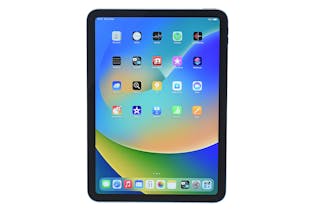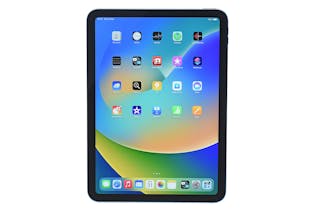Review: Is Oppo’s new premium tablet an iPad killer?
The Oppo Pad 2 is fast and versatile, yet cheaper than premium tablets from Apple and Samsung.

Oppo’s Pad 2 is an Android tablet retailing for $999. It’s beautiful, powerful and elegant, all at a competitive price. It won’t be enough to break Apple’s stranglehold on the tablet market, but it’s a strong foundation for Oppo to build on.
As its name might suggest, the Pad 2 is only the second tablet that smartphone giant Oppo has brought to market. While last year’s Pad Air was a budget tablet, with a price tag of about $400, Oppo has upped the stakes this time, with a flagship model that looks to compete with the big players.
Oppo’s success in disrupting New Zealand’s smartphone market largely came through undercutting Apple’s and Samsung’s prices. The Pad 2 is an attempt to achieve the same goal in the tablet space.

An intriguing display
Any device has a marketing gimmick, and for the Pad 2, it’s the squarer shape. Where most Android tablets on the market have a 16:10 aspect ratio, this tablet is 14:10, making it feel closer to an iPad.
I found the shape particularly good for browsing sites and apps in portrait orientation – 14:10 is the aspect ratio of A4 paper, so it’s familiar to read on. However, because most horizontal video has a 16:9 ratio, the black bars at the top and bottom of a video are thicker than usual on the Pad 2, which feels like wasted space.
The Pad 2’s 2800x2000 resolution makes for an extremely detailed picture, with higher pixel density than any iPad or Galaxy Tab on the market. Colour accuracy is good too, and it has the same maximum brightness as an iPad Air at 500 nits.
The little processor that could
While the Pad 2’s MediaTek Dimensity 9000 processor isn’t quite a top-of-the-line mobile chip (like, for example, the Snapdragon in Samsung’s Galaxy Tab S9), it is within a stone’s throw when it comes to performance. It’s also roughly on par with the A14 chip in the basic iPad, although on paper it can’t compete with the M-series processors in iPad Pro and iPad Air models.
Still, the Pad 2 ran smoothly and snappily throughout my whole trial, so I have no complaints.
The chip is also power-efficient, ensuring a battery life that comfortably lasts all day.
Best as a pure tablet
At 550g and less than 7mm thick, the tablet is a breeze to carry around and light enough to hold in one hand (at least for a few minutes).
Oppo sells official accessories for use with the Pad 2, including a keyboard for $299 and a stylus for $169. In my view, the accessories are nothing special, and the dimensions and form of the tablet make it better suited for touchscreen use anyway.
If you want a laptop alternative, buy a Microsoft Surface or iPad Pro. If you expect to do a lot of drawing, there are better options too.
However, if you want a tablet in the vein of an oversized smartphone, the Pad 2 should be one of your primary options. It’s a high-quality device at a tempting price – think of it as the Android equivalent of a 10th-generation iPad, or a thrift hunter’s Galaxy Tab S9.
Oppo is still a new challenger in the tablet market, but if the Pad 2 is any indication, Samsung in particular will need to watch its back.
Also from Oppo – two new upper-middle-range phones
Along with the Pad 2, Oppo has recently released two new smartphones in its Reno series. They occupy a slightly confusing niche in Oppo’s phone range – the Reno10 Pro ($1099) costs more than the Find X5, one of Oppo’s flagship phones; while the Reno10 ($799) is priced only slightly above the A98 from Oppo’s budget series.

The key thing that discriminates the Reno10 phones is their focus on photography above all else. They feature advanced telephoto cameras, which enable optical zoom and work particularly well when you don’t want a wide field of view. A Reno10 will take better portrait photos of your friends than nearly any phone – but don’t expect it to excel at sweeping landscapes.
It’s not that performance has been sacrificed at the altar of photography. I used the Reno10 Pro for a few days and, as you’d expect from a $1100 device, it ran quickly and kept its charge well. It’s a solid mid-range phone in all respects, but with an elevated camera system that’s firmly in premium territory.
The target audience for these devices is those who want better pictures and video for their Instagram or TikTok accounts, which isn’t a small group of people by any means (and is only growing over time). However, if you’re not a social media tragic, you can probably get a better deal elsewhere.
We've tested 46 tablets.
Find the right one for you.
Amazon

Apple






Member comments
Get access to comment